Overview
It shouldn’t come as a surprise to you, but we need to eat. It’s pretty damn important if you have any intention of, well, being alive.
And that fact of life means a sizeable chunk of our monthly income heads straight back out the door and into the pockets of grocery stores, supermarkets, and restaurants. It’s a guaranteed expenditure, whether you’re a devout eat-at-homer or a zero-self-controlled-chronic-eater-outer, and that should make it a priority for any serious points and miles enthusiast.
Before you dive into the list of the best credit cards for dining and groceries, it’s worth highlighting one of the biggest frustrations about earning rates: credit card merchant codes. These little data fragments are assigned by your credit card issuer and used to dictate the points you earn based on the type of business they represent.
For example, a restaurant might be coded as 5812, but a bar may be listed as 5813. You might buy food at the bar and pay for it using a card that earns extra on restaurants, but according to your credit card issuer, you weren’t at a restaurant.
It pays to help learn some of your regular shops and restaurants to ensure you’re not losing out on points. One notorious example is Walmart. Its super centers are registered as grocery stores, while its traditional stores only register as discount stores–condemning your grocery shop to 1X point per dollar.
The Bottom Line:
The best credit cards for dining and groceries is heavily dependent on the individual’s lifestyle. While a card like the Amex Gold may appear to cover all the bases, how often we spend and where we do so can dictate things differently. Opening a card with strong earning rates for munchies can be a game changer, whatever your habits, so we’ve compiled a list to help you find the best credit cards for dining and groceries—depending on your lifestyle.
The quick pick:
Best dining and grocery credit cards of November 2024:
- The best card for foodies: American Express® Gold Card
- The best card for simplicity: Citi Strata Premier℠ Card
- The best card for newbies: Chase Sapphire Preferred® Card
- The best card for points pros: Chase Sapphire Reserve®
- The best card for renters: Bilt Mastercard®
- The best card for earning hotel points: Hilton Honors American Express Surpass® Card
- The best card for one-card lovers: Capital One Venture X Rewards Credit Card
- The best card for cash back: Blue Cash Preferred® Card from American Express
- The best card for groceries: Capital One SavorOne Cash Rewards Credit Card
- Best for: Foodies
American Express® Gold Card
Earn as high as 100,000 Membership Rewards® Points
Offer Details:
You may be eligible for as high as 100,000 Membership Rewards® Points after you spend $6,000 in eligible purchases on your new Card in your first 6 months of Card Membership. Welcome offers vary and you may not be eligible for an offer. Apply to know if you’re approved and find out your exact welcome offer amount – all with no credit score impact. If you’re approved and choose to accept the Card, your score may be impacted.
Why we like it
The American Express® Gold Card takes your dining and grocery spending to the next level, offering an impressive 4X Membership Rewards® points per dollar spent on purchases at restaurants worldwide, on up to $50,000 in purchases per calendar year, then 1X points for the rest of the year, and 4X Membership Rewards® points per dollar spent at U.S. supermarkets, on up to $25,000 in purchases per calendar year, then 1X points for the rest of the year.
To put this into perspective, if you spend $8,400 annually on dining and groceries, which aligns with the average American’s spending, you could earn enough points for a roundtrip flight to Hawaii. Meanwhile, the bonus alone is worth over $1,000, adding significant value to your everyday spending.
Reward details
4X Membership Rewards® points per dollar spent on purchases at restaurants worldwide, on up to $50,000 in purchases per calendar year, then 1X points for the rest of the year.
4X Membership Rewards® points per dollar spent at US supermarkets, on up to $25,000 in purchases per calendar year, then 1X points for the rest of the year.
3X Membership Rewards® points per dollar spent on flights booked directly with airlines or on AmexTravel.com.
2X Membership Rewards® points per dollar spent on prepaid hotels and other eligible purchases booked on AmexTravel.com.
1X Membership Rewards® point per dollar spent on all other eligible purchases.
Pros & Cons
Pros
-
Earn 4X Membership Rewards® points per dollar spent at restaurants worldwide, on up to $50,000 in purchases per calendar year, then 1X points for the rest of the year.
-
Earn 4X Membership Rewards® points per dollar spent at U.S. supermarkets, on up to $25,000 in purchases per calendar year, then 1X points for the rest of the year.
-
Earn 3X Membership Rewards® points per dollar spent on flights booked directly with airlines or on AmexTravel.com.
-
Earn 2X Membership Rewards® points per dollar spent on prepaid hotels and other eligible purchases booked on AmexTravel.com.
-
Earn 1X Membership Rewards® point per dollar spent on all other eligible purchases.
-
Get up to $100 in statement credits each calendar year for dining at U.S. Resy restaurants or making other eligible Resy purchases. That’s up to $50 in statement credits semi-annually. Enrollment required.
-
Earn up to $10 in statement credits monthly when you pay with the American Express® Gold Card at Grubhub, The Cheesecake Factory, Goldbelly, Wine.com, and Five Guys, totaling up to $120 per year. Enrollment required.
-
Explore over 1,000 upscale hotels worldwide with The Hotel Collection and receive a $100 credit towards eligible charges* with every booking of two nights or more through AmexTravel.com. *Eligible charges vary by property.
-
Apply with confidence. Know if you’re approved for a Card with no impact to your credit score. If you’re approved and you choose to accept this Card, your credit score may be impacted.
Cons
-
$325 annual fee
-
No major travel perks like its bigger sibling, the Amex Platinum
- Best for: Everyday Earning
Citi Strata Premier℠ Card
75,000 Bonus Points
Offer Details:
75,000 Bonus Points after you spend $4,000 on purchases in your first 3 months of account opening - redeemable for $750 in gift cards or travel rewards at thankyou.com
Why we like it
The Citi Strata Premier Card is an underrated travel credit card that offers both high points-earning potential and simplicity. While the mid-tier card doesn’t come with any premium benefits, its earning on popular spending categories is almost unmatched. Holders earn 3X points on air travel, hotels, gas stations, supermarkets, and restaurants, making it ludicrously easy to accrue points. Throw in the healthy 75,000-point bonus and you’ve got a great haul of rewards on your hands.
Reward details
10 points per $1 spent on Hotels, Car Rentals, and Attractions booked on CitiTravel.com.
3 points per $1 on Air Travel and Other Hotel Purchases, at Restaurants, Supermarkets, Gas, and EV Charging Stations.
1 Point per $1 spent on all other purchases
Pros & Cons
Pros
The 75,000-point intro bonus is worth $750 in gift cards and well over $1,000 when transferred to travel partners, making the $95 dollar annual fee an afterthought. You could ignore the card for a decade, and it would still be worth it.
Its earning potential is phenomenal: Earning 3X points on categories like gas and supermarkets, which are part of the average American’s biggest expenses, means the Citi Strata Premier will work hard for you on a daily basis.
Cardholders get a $100 hotel benefit each year on a hotel purchase of $500 or more. Not the greatest perk in the world, but a nice saving on an unexpected hotel stay that wipes out the yearly fee itself.
As it’s a World Elite Mastercard, cardholders will enjoy varied benefits like Lyft credits, upgrades and breakfast at select hotels, and cell phone protection.
Cons
Citi’s transfer partners are mainly foreign airlines, so using the points on US-based carriers will require some extra research.
Other mid-tier cards may offer some more interesting perks.
Terms Apply
- Best for: Beginner Travelers
Chase Sapphire Preferred® Card
75,000 Bonus Points
Offer Details:
Earn 75,000 bonus points after you spend $5,000 on purchases in the first 3 months from account opening.
Why we like it
The Chase Sapphire Preferred Card is the ultimate all-around travel credit card—it fits perfectly into almost any points-earner’s wallet. Points novices can enjoy a significant intro bonus and easy to grasp spending categories with an approachable annual fee. The more experienced can utilize its high value earning potential as a secondary card and also gain access to Chase’s strong travel booking portal.
Reward details
5x on travel purchased through Chase Travel℠.
3x on dining, select streaming services and online groceries.
2x on all other travel purchases.
1x on all other purchases.
Pros & Cons
Pros
The $50 dollar hotel credit for stays purchased on the Chase Travel Portal already cuts the already approachable $95 annual fee significantly.
10% anniversary points boost – each account anniversary you’ll earn bonus points equal to 10% of your total purchases made the previous year.
Complimentary DashPass which unlocks $0 delivery fees & lower service fees for a min. of one year when you activate by 12/31/27. Plus, a $10 promo each month on non-restaurant orders.
Along with all of the above, cardholders also have access to a string of travel protections like rental coverage, cancellation insurance, and purchase protection.
Cons
It’s subject to Chase’s 5/24 rule. So, if you’ve opened five cards in the last two years, you’re most likely not going to be accepted.
Competing cards like the Capital One Venture have a better earning rate for non-bonus spend.
Chase has a once-per-lifetime rule for sign-up bonuses on their Sapphire cards, including the Sapphire Preferred, Sapphire Reserve, and Sapphire Reserve for Business. So, once you’ve earned a welcome bonus on any of these cards, you’ll never be eligible for the bonus again on the same card.
Terms Apply
- Best for: Luxury Travel
Chase Sapphire Reserve®
125,000 bonus points
Offer Details:
Earn 125,000 bonus points after you spend $6,000 on purchases in the first 3 months from account opening.
Why we like it
This card just got a major re-vamp and you can now get more than $2,700 in annual value with Sapphire Reserve!
Reward details
8x points on Chase TravelSM
4x points on flights and hotels booked direct
3x points on dining
1x points on all other purchases
Pros & Cons
Pros
-
The points are worth up to 2 cents a piece when used directly on Chase’s Ultimate Rewards Portal, offering a simple but high-value use for your points.
-
Plenty of excellent transfer partners allow points to be maximized
-
Some excellent partnerships with Doordash and Lyft add to its value.
-
Priority Pass membership allows access to over 1,300+ airport lounges and restaurants.
Cons
-
It’s subject to Chase’s 5/24 rule. So if you’ve opened five cards in the last two years, you’re most likely not going to be accepted.
-
Chase has a once-per-lifetime rule for sign-up bonuses on their Sapphire cards, including the Sapphire Preferred, Sapphire Reserve, and Sapphire Reserve for Business. So, once you’ve earned a welcome bonus on any of these cards, you’ll never be eligible for the bonus again on the same card.
Terms Apply
- Best for: Renters
Bilt Mastercard®
Link a credit or debit card to start stacking Bilt Points with your usual card rewards
Why we like it
The no annual fee Bilt Mastercard® is a very unique product that can turn points earned from one of your largest monthly expenses into a heap of travel rewards and other redemption options. It’s the only card that allows you to pay your rent with no transaction fees—you’ll earn 1X points on rent, up to 100,000 points a year. Many landlords don’t accept credit cards or they charge a convenience fee to use a credit card to pay rent—making it an intriguing option for renters across the US. Plus, you can link a credit or debit card to stack Bilt Points with your usual rewards.
Reward details
3x points on dining
2x points on travel
1x points on other purchases
1x points on rent without the transaction fee, up to 100,000 points in a calendar year. When you use the card 5 times each statement period using your Bilt Mastercard, you’ll earn points on rent and qualifying net purchases.
Pros & Cons
Pros
The greatest benefit is obvious: redeeming points earned from rent into travel rewards with no transaction fees attached.
Bilt has some excellent and unique transfer partners, like United Airlines and Hyatt.
Decent points-earning potential in other categories like 2X points on travel, 3X points on dining, and 1X points on rent (up to 100,000 points in a calendar year) and other purchases.
You can earn interest on Bilt Points when you reach Silver status.
A few other nice benefits are included, such as Cellular Telephone Protection.
Cons
No sign-up bonus
Use the card 5 times each statement period to earn points. So you can’t use it solely for rent. I’d advise putting some restaurant bills on it, as you’ll grab 3X points on those transactions.
Terms Apply
- Best for: Free Hilton Stays
- Annual Fee: $150
- APR: 19.74%-28.74% Variable
- Reward Rate: 3X - 12X
- Recommended Credit: Good to Excellent
Hilton Honors American Express Surpass® Card
155,000 Hilton Honors Bonus Points
Offer Details:
Earn 155,000 Hilton Honors Bonus Points after you spend $3,000 in purchases on the Card in the first 6 months of Card Membership. Offer ends 1/14/2026.
Why we like it
The Hilton Honors American Express Surpass® Card is an excellent hotel card, with a strong intro bonus of 155,000 Hilton Honors bonus points after you spend $3,000 in purchases on the card in your first six months of card membership. It’s worth having this card even for a couple of stays a year, as the $150 annual fee is already validated by the free breakfast and strong points earnings. If free Hilton nights is the goal, its earning potential is stellar, with 4X points for each dollar on U.S. online retail purchases, and 3X points for all other eligible purchases on your card.
Reward details
12X Hilton Honors Bonus Points for each dollar of eligible purchases charged on your card directly with a hotel or resort within the Hilton portfolio.
6X Points for each dollar of purchases on your Card at U.S. restaurants, at U.S. supermarkets, and at U.S. gas stations.
4X Points for each dollar on U.S. Online Retail Purchases.
3X Points for all other eligible purchases on your Card.
Pros & Cons
Pros
-
Strong 155,000-point intro bonus, which could translate to multiple free nights or one night in a luxury property in some places
-
Get up to $50 in statement credits each quarter for purchases made directly with a property in the Hilton portfolio on your Hilton Honors American Express Surpass® Card. That’s up to $200 in statement credits annually.
-
Enjoy complimentary Hilton Honors™ Gold status with your Card. Plus, spend $40,000 on eligible purchases on your Card in a calendar year and you can earn an upgrade to Hilton Honors Diamond status through the end of the next calendar year. Terms and Limitations apply.
-
Strong spending categories on popular purchases like U.S. supermarkets, U.S. gas stations, and U.S. restaurants
-
Free Night Reward from Hilton Honors after you spend $15,000 on eligible purchases on your card in a calendar year
-
Enjoy complimentary Hilton Honors(TM) Gold Status
Cons
-
No automatic free anniversary nights
-
You’ll need a lot of Hilton points to redeem for a free night at a luxury property
-
$150 annual fee
- Best for: Overall Travel
Capital One Venture X Rewards Credit Card
100,000 Bonus Miles
Offer Details:
LIMITED-TIME OFFER: Earn 100,000 bonus miles once you spend $10,000 on purchases in the first 6 months from account opening - equal to $1,000 in travel
Why we like it
The Capital One Venture X is a direct competitor to the Chase Sapphire Reserve, and for many seeking a simpler earning scheme with premium perks, it could be the better option. But the Venture X truly shines with one benefit in particular: four free authorized users. Plus, every year on your cardholder anniversary you get 10,000 points to use for travel.
Reward details
10 Miles per dollar on hotels and rental cars booked through Capital One Travel
5 Miles per dollar on flights and vacation rentals booked through Capital One Travel
2 Miles per dollar on every purchase
Pros & Cons
Pros
Its great intro bonus of 100,000 miles is worth well over $1,500 when transferred to partner airlines and hotels, or a flat rate $1,000 when redeemed on the Capital One Travel Portal.
Cardholders get a bonus of 10,000 miles each year after their first account anniversary, which is nothing to shrug off, especially when a little bit short of that business class flight. It’s worth almost $200 depending on how you use it.
The $300 annual credit for purchases made on the Capital One Travel Portal, combined with the yearly free miles, more than annul the $395 annual fee.
Four authorized users can be added for free.
Enjoy access to 1,300+ lounges worldwide, including Capital One Lounge locations and Priority Pass™ lounges, after enrollment
A generous offering of travel insurance, protections and reimbursements round out an excellent array of benefits.
Cons
The $300 credit is a bit less flexible than the Chase Sapphire Reserve’s comparable benefit.
Miles earning is the same as the Sapphire Reserve on portal-based purchases, but less on general travel spending.
Capital One transfer partners are solid, but still don’t include any US-based airlines or hotels.
Terms Apply
- Best for: High Earning Power
- Annual Fee: $0 intro annual fee for the first year, then $95.
- APR: Low Intro APR: 0% intro APR on purchases and balance transfers for 12 months from the date of account opening. After that, your APR will be a variable APR of 19.74%-28.74%.
- Reward Rate: 1%-6%
- Recommended Credit: Good to Excellent
Blue Cash Preferred® Card from American Express
$250 intro offer
Offer Details:
Earn $250 after you spend $3,000 on purchases in your first 6 months of card membership
Why we like it
The American Express Blue Cash Preferred is an almost indispensable card for racking up serious cash back. Even considering its annual fee (which has a $0 annual fee the first year), it represents tremendous value. Combined with another, more specific rewards-earning, the Blue Cash Preferred could be the foundation of an outstanding cash-back earning strategy.
Reward details
6% cash back at U.S. supermarkets on up to $6,000 per year in eligible purchases (then 1%)
6% cash back on select U.S. streaming subscriptions
3% cash back at eligible U.S. gas stations and on transit (including taxis/rideshare, parking, tolls, trains, buses and more) purchases
1% cash back on other purchases.
Cash Back is received in the form of Reward Dollars that can be redeemed as a statement credit and at Amazon.com checkout.
Pros & Cons
Pros
Earn a $250 statement credit after you spend $3,000 in eligible purchases on your new Card within the first 6 months.
Plan It®: Buy now, pay later with Plan It. Split purchases of $100 or more into equal monthly installments with a fixed fee so you don’t have the pressure of paying all at once. Simply select the purchase in your online account or the American Express® App to see your plan options. Plus, you’ll still earn rewards on purchases the way you usually do.
Get up to a $10 monthly statement credit after using your enrolled Blue Cash Preferred® Card for a subscription purchase, including a bundle subscription purchase, at disneyplus.com, Hulu.com, or Plus.espn.com U.S. websites. Subject to auto-renewal.
Cons
Not the most lucrative intro offer
- Best for: Capital One loyalists who want maximize entertainment spending
- Annual Fee: $0
- APR: 0% intro APR on purchases and balance transfers for 12 months; 18.74% - 28.74% variable APR after that
- Reward Rate: 1%-8%
- Recommended Credit: 670-850
Capital One Savor Cash Rewards Credit Card
$200 cash bonus
Offer Details:
Earn a one-time $200 cash bonus once you spend $500 on purchases within the first 3 months from account opening
Why we like it
The Capital One Savor fills a unique space in the rewards landscape. While it is a cashback card, those with a Capital One Venture Rewards Card can convert earning into Venture Miles to recieve outsized value. The 3% cashback rate on entertainment, dining, streaming services, and grcoery stores represents a significant return on major spending categories and can help consolidate a broader Venture Miles store.
Reward details
8% Cash Back on Capital One Entertainment purchases
Earn unlimited 5% cash back on hotels, vacation rentals and rental cars booked through Capital One Travel
3% Cash Back at grocery stores (excluding superstores like Walmart® and Target®), on dining, entertainment and popular streaming services
1% Cash Back on all other purchases
Pros & Cons
Pros
No annual fee
Decent intro bonus for a low threshold
Strong earning on big-spend categories
Can be redeemed as cashback or miles if cardholders has other Cap 1 products
Cons
Cardholders limited to cashback if they don’t have another Venture Miles earning card
Terms Apply
*For Capital One products listed on this page, some of the above benefits are provided by Visa® or Mastercard® and may vary by product. See the respective Guide to Benefits for details, as terms and exclusions apply


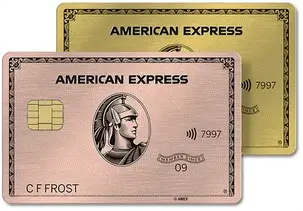
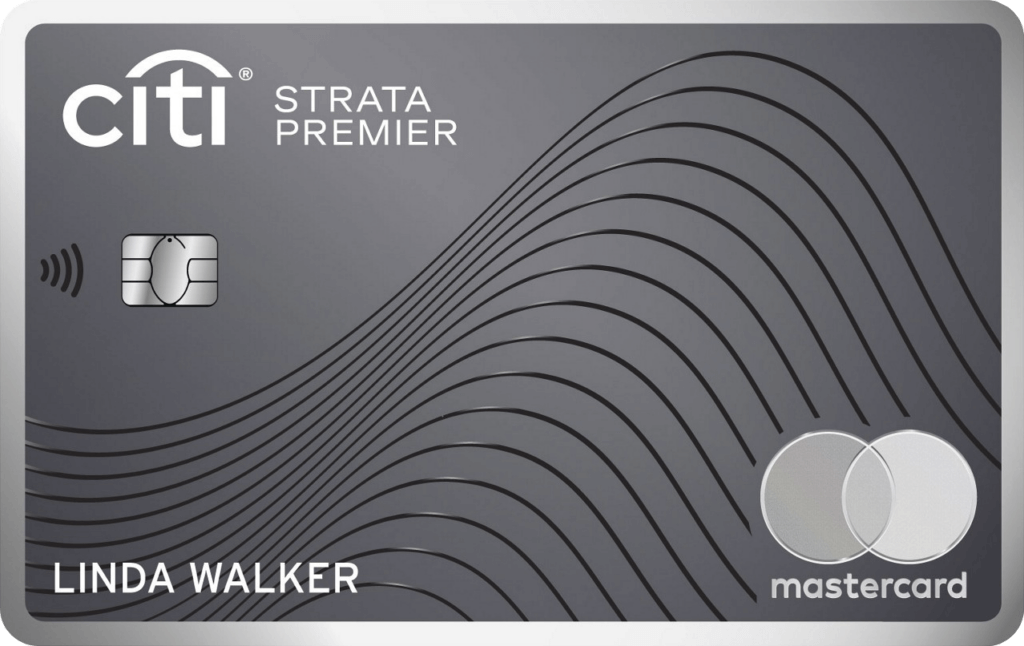
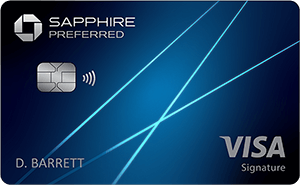


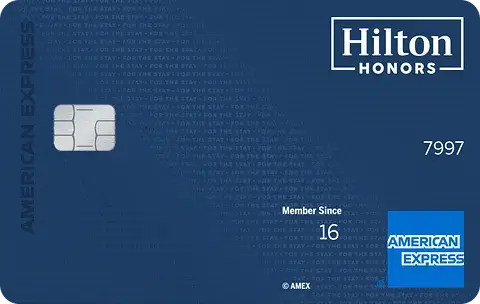

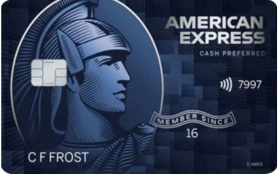
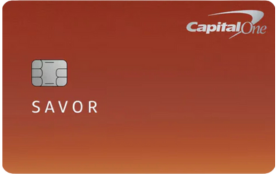
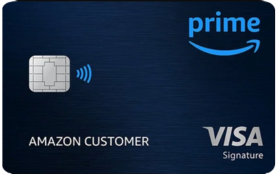





 by your friends at The Daily Navigator
by your friends at The Daily Navigator



